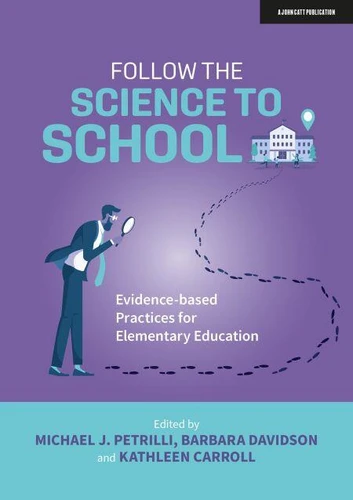Follow the Science to School: Evidence - based Practices for Elementary Education
Par : , ,Formats :
Disponible dans votre compte client Decitre ou Furet du Nord dès validation de votre commande. Le format ePub protégé est :
- Compatible avec une lecture sur My Vivlio (smartphone, tablette, ordinateur)
- Compatible avec une lecture sur liseuses Vivlio
- Pour les liseuses autres que Vivlio, vous devez utiliser le logiciel Adobe Digital Edition. Non compatible avec la lecture sur les liseuses Kindle, Remarkable et Sony
- Non compatible avec un achat hors France métropolitaine
 , qui est-ce ?
, qui est-ce ?Notre partenaire de plateforme de lecture numérique où vous retrouverez l'ensemble de vos ebooks gratuitement
Pour en savoir plus sur nos ebooks, consultez notre aide en ligne ici
- Nombre de pages152
- FormatePub
- ISBN978-1-915361-18-9
- EAN9781915361189
- Date de parution20/03/2022
- Protection num.Adobe DRM
- Infos supplémentairesepub
- ÉditeurJohn Catt
Résumé
"Follow the science."How often have you picked up an education book to read how, according to the authors, the system is broken, failing, and flailing-but their ideas for fixing it will bring about a miraculous transformation?That's not the approach of this volume. Sure, the editors believe that our system of education could achieve significantly better results. But they also recognize that schools have gotten better over time.
One explanation is the progress schools have made in "following the science". Especially in early reading and math instruction, scholars know more now about what works than we did in the past, and more schools are putting that knowledge into practice. Now, in the wake of a horrific pandemic, even the best elementary schools are struggling to help their students get their momentum back again. In this book, the editors share high-quality syntheses of evidence and insights from leading educators, academics, and other experts.
And they communicate those findings in user-friendly language, with an understanding of the real-world complexities of schools and classrooms.
One explanation is the progress schools have made in "following the science". Especially in early reading and math instruction, scholars know more now about what works than we did in the past, and more schools are putting that knowledge into practice. Now, in the wake of a horrific pandemic, even the best elementary schools are struggling to help their students get their momentum back again. In this book, the editors share high-quality syntheses of evidence and insights from leading educators, academics, and other experts.
And they communicate those findings in user-friendly language, with an understanding of the real-world complexities of schools and classrooms.
"Follow the science."How often have you picked up an education book to read how, according to the authors, the system is broken, failing, and flailing-but their ideas for fixing it will bring about a miraculous transformation?That's not the approach of this volume. Sure, the editors believe that our system of education could achieve significantly better results. But they also recognize that schools have gotten better over time.
One explanation is the progress schools have made in "following the science". Especially in early reading and math instruction, scholars know more now about what works than we did in the past, and more schools are putting that knowledge into practice. Now, in the wake of a horrific pandemic, even the best elementary schools are struggling to help their students get their momentum back again. In this book, the editors share high-quality syntheses of evidence and insights from leading educators, academics, and other experts.
And they communicate those findings in user-friendly language, with an understanding of the real-world complexities of schools and classrooms.
One explanation is the progress schools have made in "following the science". Especially in early reading and math instruction, scholars know more now about what works than we did in the past, and more schools are putting that knowledge into practice. Now, in the wake of a horrific pandemic, even the best elementary schools are struggling to help their students get their momentum back again. In this book, the editors share high-quality syntheses of evidence and insights from leading educators, academics, and other experts.
And they communicate those findings in user-friendly language, with an understanding of the real-world complexities of schools and classrooms.



